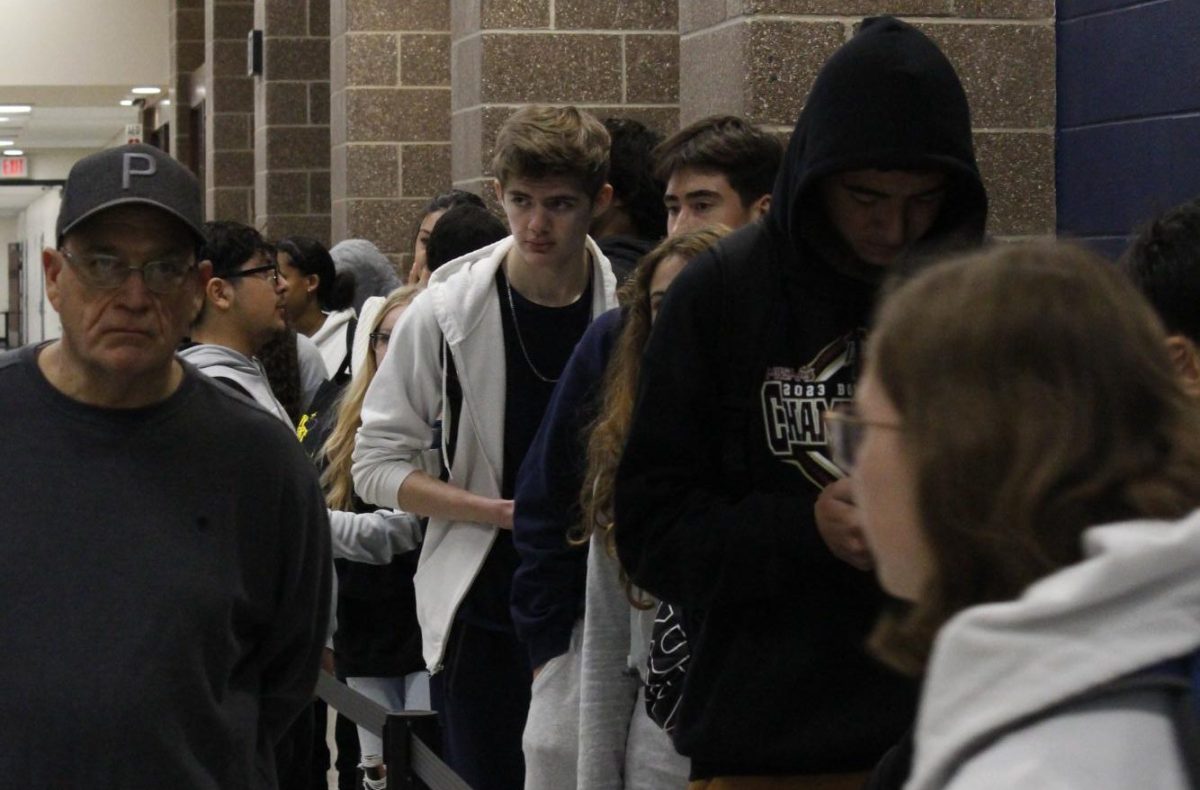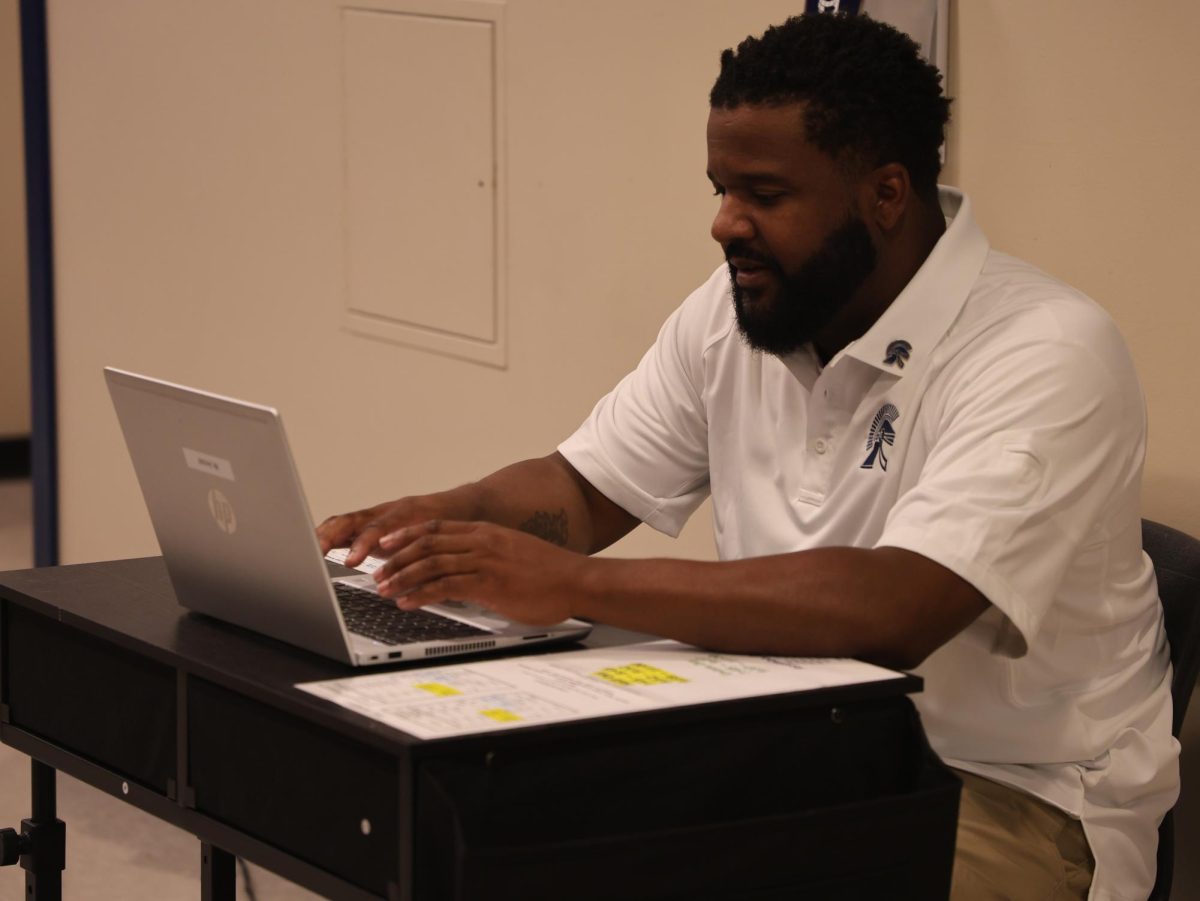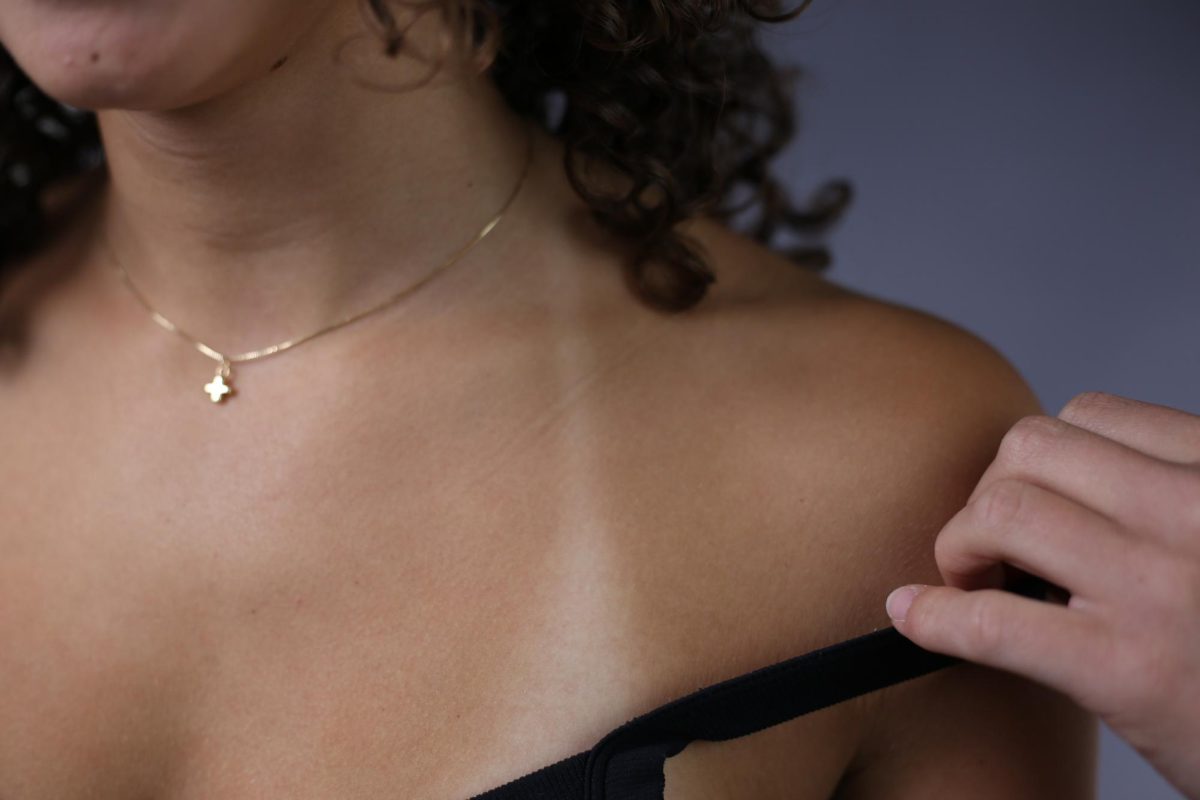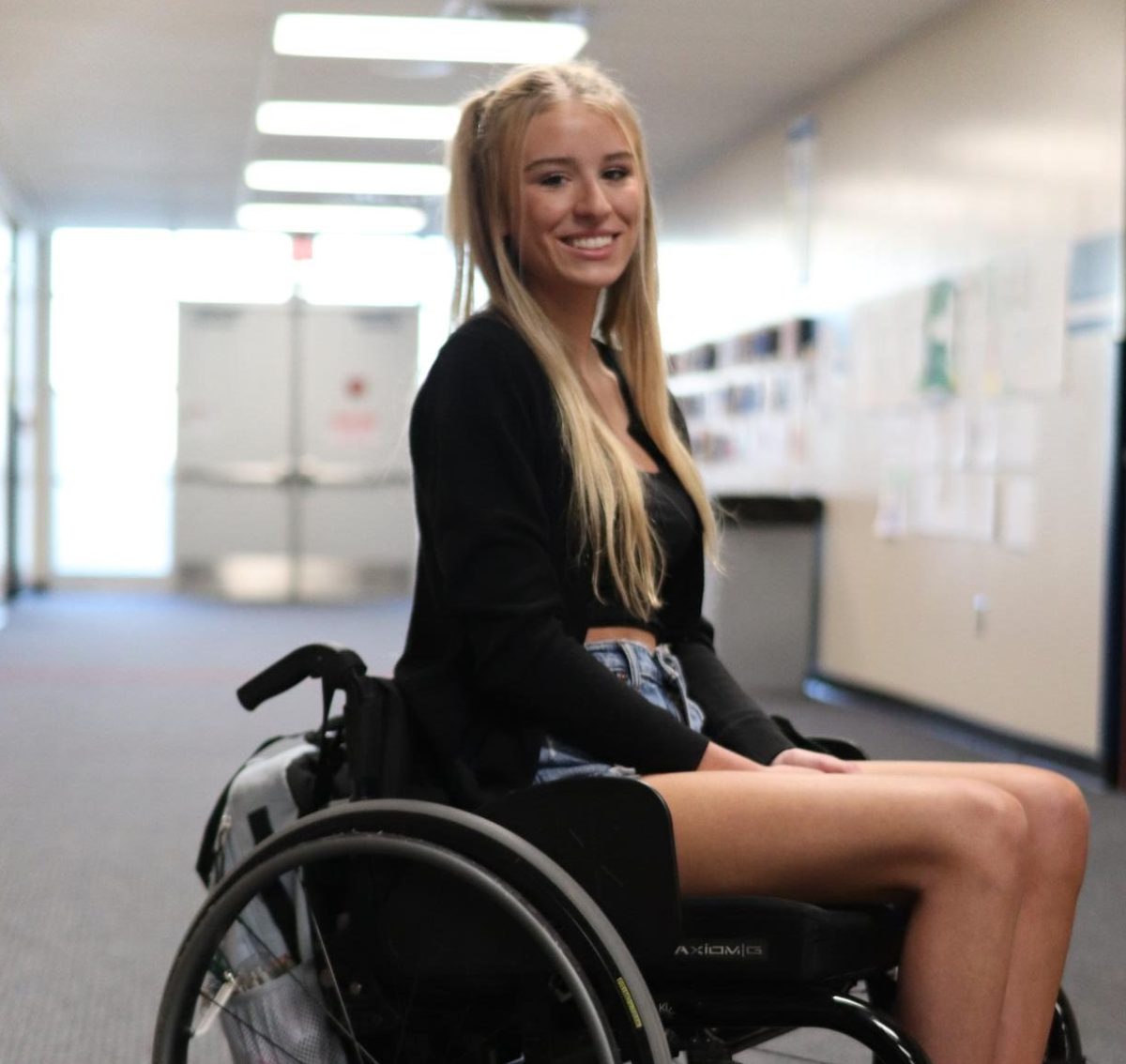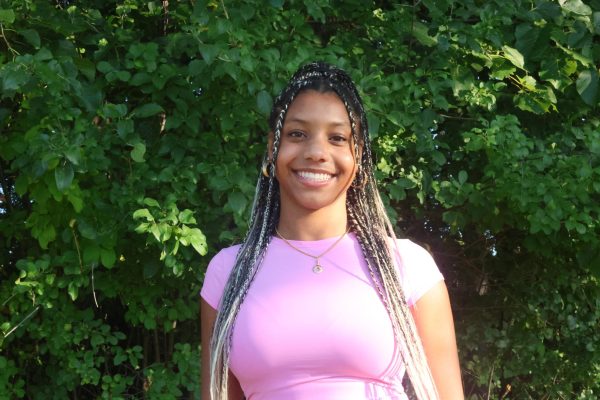When Ava Lehman (10) decides to get school provided lunch, she finds that the line stretches all the way down to the trophy cases. There have even been multiple instances where she has had as little as five minutes to eat her food, even though the lunch period is 31 minutes. Even when she moves quickly to lunch, it doesn’t help.
“Sometimes when I don’t have enough time to eat, I have to throw my lunch away,” Lehman said.
Lehman is one of the many students that has had a negative experience due to the late lunch overpopulation. While this year’s approach to lunch scheduling was no different from previous years, students in late lunch have reported significantly longer wait times for their lunch compared to students in early lunch.
For research, we asked two students in late lunch to time themselves for two days during the week of Oct. 9 to see how long they stood in a lunch line before getting their meal. For Lehman, it was about 14 minutes of waiting every time she wanted school-provided lunch.
But she is not the only one who has been affected by the late lunch overpopulation. Kate Chenault (10) frequently struggles to find seating at the lunchroom because all of the tables are taken.
“One day, there was nowhere to sit, so my friend and I ended up going to the library,” Chenault said.
This year, late lunch population is larger than it was in the past years. About 30-50 more students get school food during late lunch than in early lunch according to Director of Dining Services Sandra Leach.
Principal Ashley Schwarzbek said that since the state of Michigan made all school lunches free, the number of students getting hot lunch has dramatically increased compared to last year, which is one of the leading causes for the lengthy lunch lines.
Students in early lunch on the other hand, do not seem to be having the same problems as the students in late lunch.
“I wait in line for about four minutes, ” Elliot Pennington (10) said. “ The lunch room isn’t crowded, I can sit in the same place every day, not worried that someone will take my spot.”
Students interviewed in early lunch said that they spend two to five minutes in the school food line, but students in late lunch say they spend 10-15 minutes in line and feel that they don’t always have enough time to eat.
Principal Schwarzbek acknowledged that the lunch populations are uneven, but did not indicate that the administration has any plans to do anything different to change it in the future. At least for Lehman, she doesn’t intend to keep adding to the late lunch problem.
“Next year I plan on trying to get into early lunch,” Lehman said.



